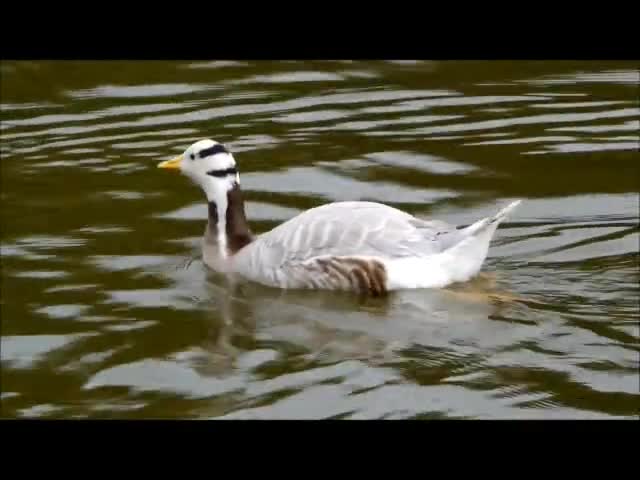
The bar-headed goose (Anser indicus) is a goose that breeds in Central Asia in colonies of thousands near mountain lakes and winters in South Asia, as far south as peninsular India. It lays three to eight eggs at a time in a ground nest.
Vogel suggests that Bar-headed goose is likely to be Hamsa of Indian mythology. Dave suggests that Bar-headed goose is likely to be Kadamb in ancient and medieval Sanskrit literature, whereas Hamsa generally refers to swan.
The bird is pale grey and is easily distinguished from any of the other grey geese of the genus Anser by the black bars on its head. It is also much paler than the other geese in this genus. In flight, its call is a typical goose honking. A mid-sized goose, it measures 71–76 cm (28–30 in) in total length and weighs 1.87–3.2 kg (4.1–7.1 lb).
The summer habitat is high-altitude lakes where the bird grazes on short grass. The species has been reported as migrating south from Tibet, Kazakhstan, Mongolia and Russia before crossing the Himalaya. The bird has come to the attention of medical science in recent years as having been an early victim of the H5N1 virus, HPAI (highly pathogenic avian influenza), at Qinghai. It suffers predation from crows, foxes, ravens, sea eagles, gulls and others. The total population may, however, be increasing, but it is complex to assess population trends, as this species occurs over more than 2,500,000 km2 (970,000 sq mi).
The bar-headed goose is one of the world's highest-flying birds, having been heard flying across Mount Makalu – the fifth highest mountain on earth at 8,481 m (27,825 ft) – and apparently seen over Mount Everest – 8,848 m (29,029 ft) – although this is a second-hand report with no verification. This demanding migration has long puzzled physiologists and naturalists: "there must be a good explanation for why the birds fly to the extreme altitudes... particularly since there are passes through the Himalaya at lower altitudes, and which are used by other migrating bird species." In fact, bar-headed geese have never been directly tracked (using GPS or satellite logging technology) flying higher than 6,540 metres (21,460 ft), and it is now believed that they do take the high passes through the mountains. The challenging northward migration from lowland India to breed in the summer on the Tibetan Plateau is undertaken in stages, with the flight across the Himalaya (from sea-level) being undertaken non-stop in as little as seven hours. Surprisingly, despite predictable tail winds that blow up the Himalayas (in the same direction of travel as the geese), bar-headed geese spurn these winds, waiting for them to die down overnight, when they then undertake the greatest rates of climbing flight ever recorded for a bird, and sustain these climbs rates for hours on end, according to research published in 2011.
